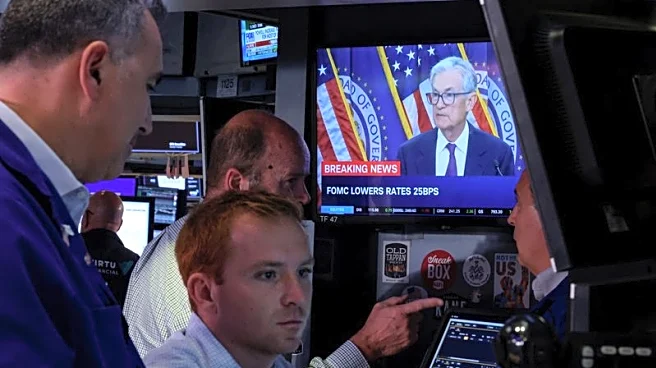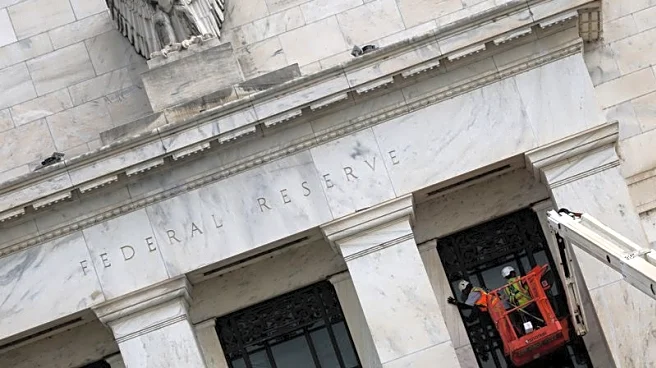What's Happening?
The U.S. dollar experienced volatility following the Federal Reserve's decision to reduce interest rates by a quarter point. This move, described by Fed Chair Jerome Powell as a risk-management cut, was in response to a weakening labor market. Despite the cut, Powell indicated that there was no immediate need for further easing. The decision led to mixed reactions among analysts, with some viewing it as the beginning of a series of cuts, while others perceived the Fed's stance as cautious. Concurrently, the Bank of England maintained its interest rates at 4% and slowed its pace of quantitative tightening, impacting the pound and gilt yields.
Why It's Important?
The Federal Reserve's decision to cut interest rates is significant as it reflects ongoing concerns about the U.S. labor market and inflation risks. This action impacts the dollar's value, influencing international trade and investment. The volatility in the dollar can affect U.S. businesses engaged in global markets, potentially altering import and export dynamics. Additionally, the Fed's cautious approach may signal uncertainty in economic recovery, affecting investor confidence and financial market stability. The Bank of England's decision to maintain rates and slow bond sales further highlights global economic challenges.
What's Next?
Future actions by the Federal Reserve will be closely monitored, as further rate cuts could be considered if economic conditions worsen. Analysts and investors will watch for signals from the Fed regarding its monetary policy direction. The Bank of England's decision to slow quantitative tightening may influence other central banks' strategies, potentially affecting global financial markets. Additionally, upcoming policy decisions from other major economies, such as Japan, could further impact currency values and economic forecasts.
Beyond the Headlines
The Federal Reserve's interest rate cut raises questions about the long-term implications for inflation and economic growth. The decision reflects broader concerns about economic stability and the effectiveness of monetary policy in addressing labor market challenges. The interplay between U.S. and global economic policies underscores the interconnectedness of financial systems, highlighting the need for coordinated efforts to manage economic risks.











